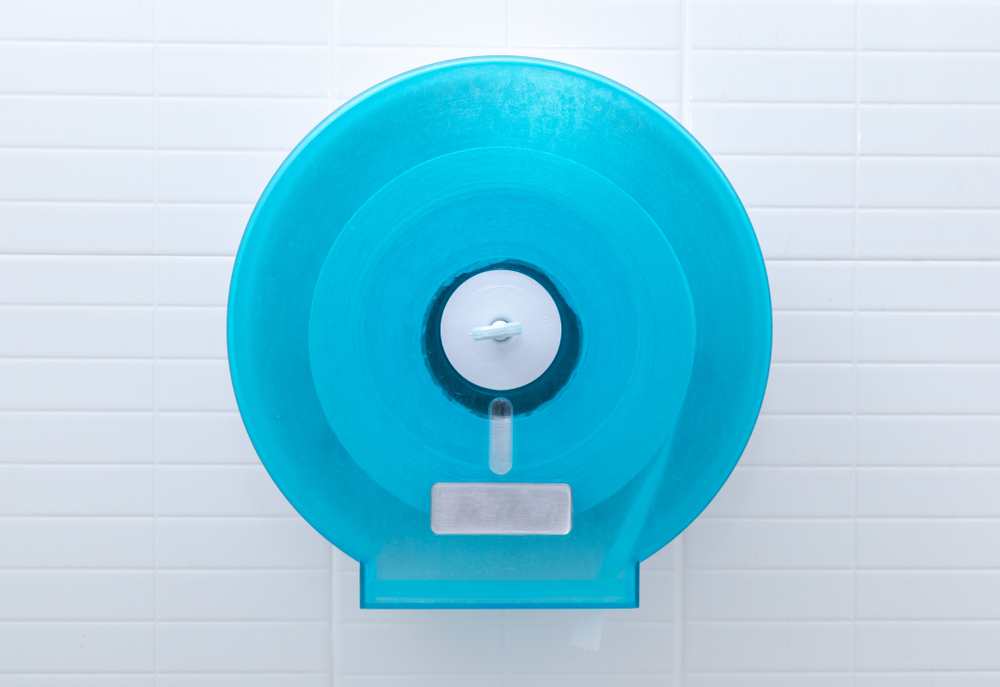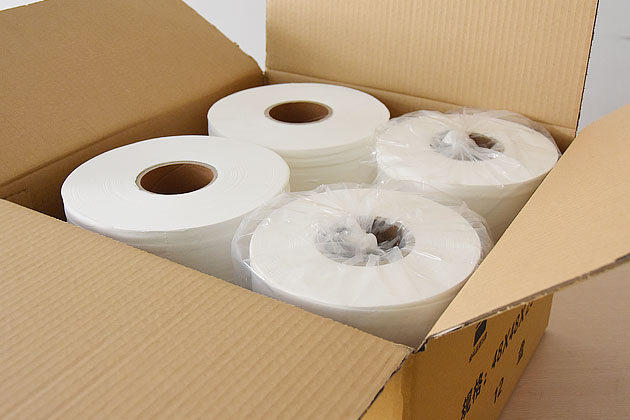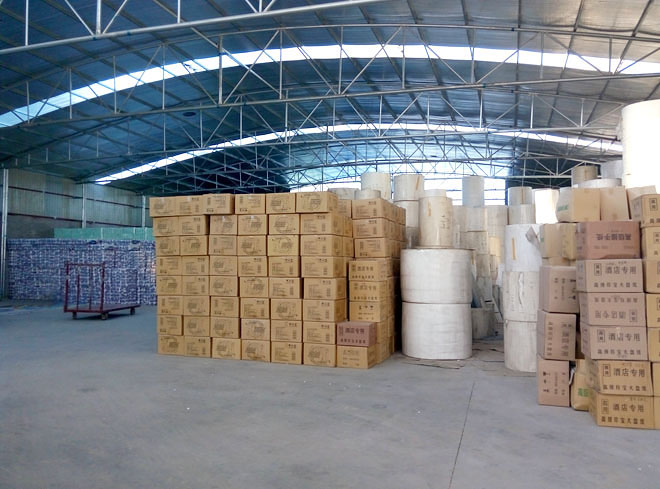Elegir el papel higiénico adecuado para los baños públicos es más complicado de lo que piensas. Los gerentes de instalaciones y los dueños de negocios hacen malabarismos con los costos, la durabilidad y las preocupaciones ambientales. El gasto excesivo o la elección de opciones de baja calidad conduce a un reaquetimiento frecuente, al aumento de los desechos y a los clientes infelices, un “perder mal” situación.
Esta guía desglosa las consideraciones clave para seleccionar el mejor papel higiénico para baños, equilibrio de ahorros de costos, durabilidad y sostenibilidad. Desde estrategias de compra a granel hasta opciones ecológicas, lo ayudaremos a tomar decisiones informadas. Por ejemplo, el documento de origen superior se especializa en proporcionar papel higiénico personalizado de alta calidad que satisfaga estas diversas necesidades, ofreciendo todo, desde tamaños personalizados y envases hasta muestras y diseños gratuitos.
Lo esencial de la selección de papel higiénico para baños públicos
“Elegir el papel higiénico adecuado para los baños públicos requiere el costo de equilibrio, la durabilidad y el impacto ambiental para satisfacer las demandas de alto tráfico de manera efectiva.”
Los baños públicos enfrentan desafíos únicos cuando se trata de la selección de papel higiénico. Las áreas de alto tráfico necesitan productos que puedan soportar el uso constante mientras mantienen la higiene y la rentabilidad. Comprender estas necesidades es el primer paso para tomar una decisión informada.
Definición de las necesidades de baño de alto tráfico: comprensión de los patrones de uso
Los baños públicos ven mucha acción, y el papel higiénico debe mantenerse al día. A diferencia del uso del hogar, el papel higiénico comercial del baño debe ser lo suficientemente duradero como para manejar el uso pesado sin obstruir tuberías o desmoronarse. Piense en cuántas personas pasan a través de aeropuertos, centros comerciales u edificios de oficinas diariamente,”Es un juego de pelota completamente diferente” en comparación con el uso residencial.
Factores clave: costo, durabilidad e impacto ambiental
Al seleccionar papel higiénico para baños, entran en juego tres factores principales:
- Costo: Los pedidos masivos pueden ahorrar dinero, pero las opciones más baratas pueden requerir reemplazos más frecuentes.
- Durabilidad: Busque rollos de alta absorbencia y textura fuerte que minimicen los desechos y reduzcan el mantenimiento.
- Impacto ambiental: Las opciones sostenibles, como el papel reciclado o biodegradable, están ganando popularidad en los espacios comerciales.
Cumplimiento regulatorio y estándares de higiene
Los baños públicos deben cumplir con las estrictas regulaciones de higiene. El mejor papel higiénico para baños públicos debe ser compatible con la FDA y libre de productos químicos dañinos. Las instalaciones como hospitales y escuelas tienen requisitos aún más estrictos, así que siempre consulte las pautas locales.
Evaluación inicial: evaluación del rendimiento actual del papel higiénico
Antes de hacer un cambio, evalúe el rendimiento de su papel higiénico actual. ¿Está causando obstrucciones frecuentes? ¿Los usuarios se quejan de calidad? Responder estas preguntas ayuda a identificar la ruta de actualización correcta.
Comparación de rendimiento del papel higiénico para baños de alto tráfico
| Característica | Estándar 1 capa | Premium 2 capas | Ecológico reciclado | Punto de referencia de la industria |
|---|---|---|---|---|
| Hojas por rollo | 1000 | 800 | 900 | 850 |
| Costo por caso ($) | 25 | 35 | 30 | 32 |
| Riesgo de obstrucción | Alto | Bajo | Medio | Bajo |
| Satisfacción del usuario | 60% | 90% | 75% | 80% |
| Calificación de sostenibilidad | Bajo | Medio | Alto | Medio |
Esta tabla destaca las diferencias clave entre los tipos de papel higiénico comunes. Premium 2-capl ofrece una mejor durabilidad y satisfacción del usuario, mientras que las opciones ecológicas atraen a las empresas centradas en la sostenibilidad.
Costo y calidad de equilibrio: estrategias de compra a granel
“La compra estratégica a granel de papel higiénico para los baños puede reducir los costos hasta en un 40%, mientras se mantiene los estándares de calidad cuando se establecen las relaciones de proveedor adecuadas.”
Para los gerentes de las instalaciones que supervisan los baños de alto tráfico, el pedido a granel no se trata solo de comprar más – Se trata de comprar más inteligente. La estrategia de compra correcta puede transformar el presupuesto de suministro de baños al tiempo que garantiza una calidad constante para los usuarios.
Ventajas de los pedidos a granel: ahorro de costos y eficiencia operativa
La compra de papel higiénico en cantidades a granel generalmente ofrece ahorros del 25-40% en comparación con los precios minoristas. Más allá de las reducciones de costos directos, el pedido a granel reduce el tiempo administrativo dedicado a los reordres frecuentes y asegura que nunca enfrentará la vergüenza de los dispensadores vacíos. Los programas mayoristas del documento de origen principal demuestran cómo los envíos consolidados pueden reducir aún más los gastos logísticos.
Evaluar los costos por unidad frente al valor general
Si bien el precio más bajo por roll puede parecer atractivo, la verdadera rentabilidad considera:
- Recuento de hoja por rollo (las hojas de 800-1000 son estándar comercial)
- Compatibilidad del dispensador (reduciendo los desechos de ajustes inadecuados)
- Necesidades de mantenimiento reducidas (menos cambios medios de ahorro de mano de obra)
Negociación con proveedores: Consejos para asegurar precios competitivos
La construcción de asociaciones a largo plazo con fabricantes como el papel de la fuente superior produce mejores resultados que la compra transaccional. Los puntos de negociación clave incluyen:
- Precios escalonados basados en volumen (descuentos a ciertos umbrales de cantidad)
- Opciones de inventario de consignación (arreglos de pago por uso)
- Agrupación de múltiples productos (combinando toallas de papel, jabones, etc.)
Las mejores prácticas de gestión de almacenamiento e inventario
El almacenamiento adecuado conserva la calidad del producto y previene el desperdicio:
- Mantener el almacenamiento climático controlado (evite las áreas húmedas)
- Implementar la rotación FIFO (primero en primera salida)
- Use el estanterías verticales para maximizar la eficiencia del espacio
Comparación de compras de papel higiénico a granel (suministro anual para la instalación de 50 puestos)
| Opción de compra | Costo unitario | Costo anual | Se necesita espacio de almacenamiento | Flexibilidad del proveedor |
|---|---|---|---|---|
| Minorista mensual | $ 1.25/rollo | $ 9,000 | Mínimo | Alto |
| Al por mayor | $ 0.95/rollo | $ 6,840 | Moderado | Medio |
| Contrato anual | $ 0.75/rollo | $ 5,400 | Sustancial | Bajo |
| Programa de consignación | $ 0.82/rollo | $ 5,904 | Administrado por el proveedor | Alto |
Esta comparación muestra cómo los diferentes enfoques de compra a granel afectan tanto el costo como la flexibilidad operativa. El contrato anual ofrece un ahorro máximo, pero requiere compromiso, mientras que los programas de consignación proporcionan un equilibrio de costo y conveniencia.
Durabilidad y rendimiento: elegir la capa y el material correctos
“Seleccionar la composición de la capa y el material derecho para el papel higiénico en los baños puede reducir los desechos hasta un 30% mientras mejora la satisfacción del usuario en entornos de alto tráfico.”
Al equipar los baños comerciales, la durabilidad de su papel higiénico afecta directamente los costos de mantenimiento y la experiencia del usuario. A diferencia de las opciones residenciales, el papel higiénico para los baños debe soportar un uso constante sin obstruir tuberías o crear desorden.
Comprensión de la capa: opciones de 1 y 2-capas versus múltiples capas
El recuento de capas afecta significativamente tanto el rendimiento como el costo:
- 1 capa: Más económico pero requiere más hojas por uso
- 2 capas: Equilibrar el costo y la durabilidad – el “punto” para muchas instalaciones
- Multiplicar: Opción premium para establecimientos de lujo
La importancia de la resistencia a la tracción: minimizar el desgarro y los desechos
La resistencia a la tracción determina qué tan bien se mantiene el papel durante el uso. El proceso de fabricación especializado de Top Source Paper crea productos con una fuerza húmeda 40% mayor que los promedios de la industria, lo que reduce los desechos del desgarro prematuro.
Composición de material: Pulpa virgen versus materiales reciclados
La elección del material afecta tanto la sostenibilidad como el rendimiento:
- Pulpa virgen: Suavidad y fuerza superiores
- Reciclado: Ecológico pero puede requerir más hojas
- Bambú: Alternativa sostenible emergente
Pruebas de rendimiento: evaluación de absorción y desglose
El papel higiénico de calidad debe:
- Absorber rápidamente sin desintegrarse
- Desglose por completo en 30 minutos en el agua
- Mantener la integridad durante la dispensación
Comparación de durabilidad de papel higiénico comercial
| Tipo | Resistencia a la tracción (N/m) | Tasa de absorción | Tiempo de desglose | Satisfacción del usuario |
|---|---|---|---|---|
| Estándar 1 capa | 120 | Medio | 15 min | 65% |
| Premium 2 capas | 210 | Alto | 25 min | 92% |
| 2 capas recicladas | 180 | Medio-alto | 20 min | 85% |
| Bambú 2 capas | 195 | Alto | 22 min | 88% |
Estos datos muestran cómo funcionan diferentes materiales y configuraciones de capas en métricas clave de durabilidad. Las opciones de 2 capas premium superan consistentemente a otros tipos tanto en fuerza como en la satisfacción del usuario.
Sostenibilidad y responsabilidad ambiental: opciones de papel higiénico ecológico
“Cambiar a papel higiénico sostenible para baños puede reducir el impacto ambiental hasta en un 50%, al tiempo que cumple con los mismos estándares de rendimiento que las opciones convencionales.”
A medida que las empresas se vuelven más conscientes del medio ambiente, la demanda de soluciones ecológicas de papel higiénico ha crecido significativamente. Las instalaciones comerciales ahora pueden elegir opciones sostenibles que no se comprometan en la calidad o el rendimiento.
Beneficios del papel higiénico reciclado: reducción de la deforestación
El papel higiénico reciclado ayuda a preservar los bosques por:
- Ahorrar aproximadamente 17 árboles por tonelada de papel producido
- Usando un 50% menos de agua durante la fabricación
- Reducir el consumo de energía en un 30% en comparación con la pulpa virgen
Comprender la certificación FSC y las etiquetas ecológicas
La certificación del Consejo de Administración Forestal (FSC) garantiza:
- Prácticas forestales sostenibles
- Condiciones de trabajo justo
- Protección de biodiversidad
Biodegradabilidad y compatibilidad del sistema séptico
El papel higiénico ecológico de calidad debe:
- Desglose por completo en 1 hora
- No contener productos químicos dañinos
- Pase las pruebas estándar del sistema séptico
Estrategias de envasado ecológico y reducción de desechos
Los principales cables de papel de origen en envases sostenibles con:
- Núcleos de cartón reciclables
- Envoltura de plástico mínimo
- Opciones de embalaje a granel para reducir el desperdicio
Comparación de impacto ambiental de los tipos de papel higiénico
| Tipo | Uso de agua | Consumo de energía | Huella de carbono | Contenido reciclado |
|---|---|---|---|---|
| Pulpa virgen | Alto | Alto | 1,2 kg de CO2/rollo | 0De % |
| 50% reciclado | Medio | Medio | 0.8 kg de CO2/rollo | 50% |
| 100% reciclado | Bajo | Bajo | 0.5 kg de CO2/rollo | 100% |
| Bambú | Muy bajo | Medio | 0.6 kg de CO2/rollo | N / A |
Esta comparación muestra cómo los diferentes materiales afectan las métricas ambientales. Mientras que el papel 100% reciclado ofrece la huella de carbono más baja, el bambú proporciona una excelente alternativa renovable.
Operaciones de racionalización: embalaje, entrega y confiabilidad del proveedor
“La optimización de los sistemas de envasado y entrega de papel higiénico puede reducir los costos operativos en un 25%, al tiempo que garantiza que los baños nunca se queden sin suministros.”
Para las instalaciones que administran baños de alto tráfico, la eficiencia operativa en la adquisición de papel higiénico es tan crucial como la calidad del producto. El empaque correcto, el sistema de entrega y la relación de proveedores pueden transformar un desafío logístico en un proceso perfecto.
Opciones de embalaje: paquetes a granel versus rollos individuales
Elegir entre envases a granel y rollos individuales depende de las necesidades de su instalación:
- Paquetes a granel (12-36 rollos): Ideal para áreas de almacenamiento centralizadas
- Envuelto individualmente: Mejor para uso directo al dispersador
- Configuraciones personalizadas: Disponible en proveedores como el papel principal
La importancia del almacenamiento y el manejo fácil
El embalaje bien diseñado debe:
- Acérrima de forma segura sin colapsar
- Funciones de diseños fáciles de abrir
- Incluir una identificación clara del producto
Evaluación de la confiabilidad del proveedor y los horarios de entrega
Debe ofrecer un proveedor de papel higiénico confiable:
- Entrega constante a tiempo (98%+ tasa de cumplimiento)
- Opciones de programación flexibles
- Capacidades de reposición de emergencia
Estudios de casos: estrategias exitosas de adquisición de papel higiénico
Las instalaciones líderes logran el éxito por:
- Implementación de sistemas de inventario justo a tiempo
- Establecer programas de inventario administrados por los proveedores
- Realización de revisiones trimestrales de rendimiento del proveedor
Comparación de envasado y entrega de papel higiénico
| Opción | Espacio de almacenamiento | Eficiencia laboral | Costo por unidad | Requisitos de proveedor |
|---|---|---|---|---|
| Paletas a granel | Alto | Medio | $ 0.65/rollo | Acceso al montacargas |
| Paquetes de estuches | Medio | Alto | $ 0.75/rollo | Entrega estándar |
| Envuelto individualmente | Bajo | El más alto | $ 0.85/rollo | Sin manejo especial |
Esta comparación muestra cómo las diferentes opciones de envasado afectan la eficiencia y los costos operativos. Si bien las paletas a granel ofrecen el costo por unidad más bajo, los paquetes de casos a menudo proporcionan el mejor equilibrio para la mayoría de las instalaciones.
Conclusión
Después de una década en la industria del papel, aprendí que elegir el papel higiénico adecuado para los baños públicos es más que una tarea de rutina. Se trata de equilibrar los costos, cumplir con los estándares de higiene y asegurarse de que los usuarios tengan una experiencia positiva. El papel higiénico de alta calidad muestra que le importa cada detalle de su negocio.
Desde mi experiencia en Top Source Paper, encontrar el proveedor adecuado que comprende sus necesidades es “la mitad de la batalla.” No se trata solo de obtener un buen precio, sino también de una calidad consistente, entrega confiable y tener a alguien en quien pueda confiar.
En última instancia, la mejor opción eleva su instalación y refleja su compromiso con la excelencia. Ahora, depende de usted asegurarse de que su trabajo cumpla con las demandas de su cliente y de las instalaciones.
Preguntas frecuentes
P1: ¿Qué tipo de papel higiénico es mejor para los baños públicos?
A1: El mejor papel higiénico para baños públicos es generalmente duradero, rentable y diseñado para manejar el alto tráfico sin desintegración excesiva. Debe mantener la resistencia incluso cuando está húmedo y estar disponible en el embalaje a granel.
P2: ¿Cómo se determina la durabilidad del papel higiénico en áreas de alto tráfico?
A2: La durabilidad se puede evaluar evaluando la capa, la absorción y la resistencia del documento al desgarro bajo uso. Las revisiones y las pruebas de rendimiento en instalaciones comerciales ocupadas también proporcionan información útil sobre su longevidad.
P3: ¿Qué características deben considerarse al elegir papel higiénico para baños?
A3: Las características clave a considerar incluyen fuerza, absorción, costo por hoja, impacto ambiental y si el papel está diseñado para el pedido a granel. La durabilidad y el rendimiento en entornos de alto tráfico son impulsores de decisión esenciales.
P4: ¿Existe una ventaja de costo significativa para el papel higiénico en el pedido a granel para los baños comerciales?
A4: Sí, el pedido a granel suele ser más rentable para los espacios comerciales. Reduce el costo por unidad, minimiza el reordenamiento frecuente y garantiza un suministro constante para entornos de alto uso.
P5: ¿Cómo pueden las instalaciones garantizar que el papel higiénico que usan cumplan con los estándares de durabilidad comercial?
A5: Las instalaciones pueden buscar productos que se hayan probado independientemente para determinar la fuerza y la durabilidad, revisar estudios de casos de lugares similares de alto tráfico y considerar productos recomendados por estándares de la industria o pautas regulatorias.
P6: ¿Son efectivas las opciones de papel higiénico reciclado para los baños públicos?
A6: El papel higiénico reciclado puede ser efectivo si se ha procesado para cumplir con los estándares de durabilidad. Sin embargo, las organizaciones deben verificar que el producto reciclado mantenga su fuerza y absorción en entornos de alto uso.
P7: ¿Cuáles son los beneficios ambientales de elegir suministros de baño rentables?
A7: El uso de suministros rentables que también son ambientalmente sostenibles ayuda a reducir el desperdicio y el consumo de recursos. La compra a granel y los productos diseñados para la longevidad disminuyen la huella ambiental general de las operaciones de los baños públicos.
P8: ¿Dónde se puede encontrar revisiones independientes sobre el rendimiento de papel higiénico comercial?
A8: Se pueden encontrar revisiones independientes en informes de la industria, publicaciones de investigación académica y directrices emitidas por agencias gubernamentales o de salud pública que evalúan el desempeño de los productos en papel en las instalaciones de alto tráfico.
Enlaces externos
- Directrices de los CDC para el control de infecciones ambientales en instalaciones de atención médica
- Herramientas de calidad del aire interior de la EPA para edificios comerciales
- Estándares de saneamiento de OSHA en instalaciones públicas
- NIH Investigación sobre higiene y salud pública
- Harvard Business Review en estrategias de compra a granel
- Estudios de la Universidad de Stanford sobre mantenimiento del baño público
- Publicación de investigación de investigación sobre durabilidad del producto en papel comercial
- Investigación de la Universidad de Deakin sobre suplie de baño sostenible


